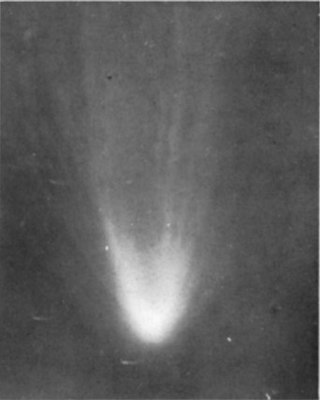Top Qs
Timeline
Chat
Perspective
C/1911 S3 (Beljawsky)
Hyperbolic comet From Wikipedia, the free encyclopedia
Remove ads
Comet Beljawsky, formally designated as C/1911 S3, is a comet discovered by the Russian astronomer Sergei Ivanovich Beljawsky on 29 September 1911 and shortly thereafter, it was seen independently by four or five other observers in the United States and probably by others throughout the world.[4]
Remove ads
Observational history
At the time it was discovered, the comet was near to the Sun which made observations difficult. However, several days after discovery it was a naked-eye object for a few days in the morning sky and later, after perihelion, as an evening object. It faded rapidly, becoming visible only in telescopes and was last seen on 17 February 1912.[1][5][6] The comet sported a tail 8 to 10 degrees in length.[4] In mid-October, the comet was visible in the evening sky together with another bright comet, C/1911 O1 (Brooks).[3]
Comet Beljawsky is a non-periodic comet noteworthy for having a hyperbolic trajectory and so it is not expected to return to the inner Solar System.[1]
Remove ads
References
Wikiwand - on
Seamless Wikipedia browsing. On steroids.
Remove ads

